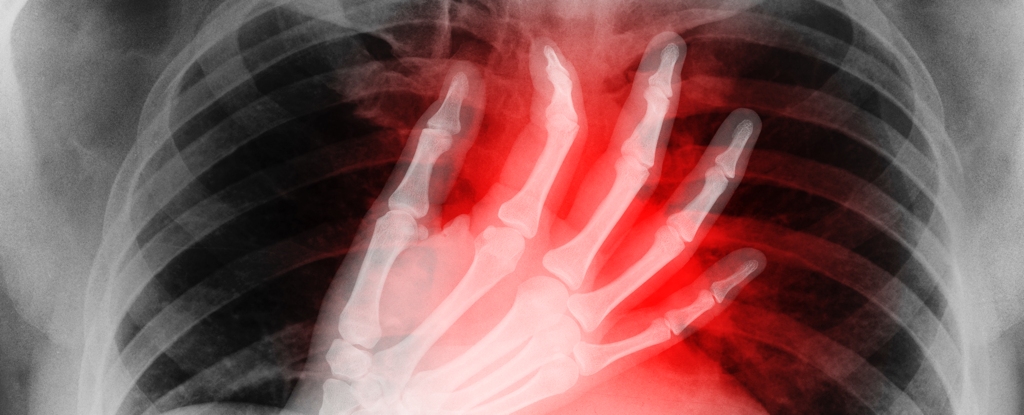ARTICLE AD
Cats are getting — and dying of — bird flu. That’s sparking worries about the risk that the ongoing outbreak of highly pathogenic H5N1 avian influenza poses for these feline furballs and their owners.
This outbreak has been sickening and killing wild birds and poultry in the United States since 2021 (SN: 5/16/24). H5N1 has also jumped into a wide variety of mammals, including farm animals such as goats, dairy cattle and, most recently, four alpacas in Idaho (SN: 3/6/23; SN: 4/3/24).
When bird flu viruses infect mammals, the viruses can get random mutations that help them replicate better in mammalian cells. That raises the possibility that the avian influenza could adapt to spread easily in people.
There’s no sign that the virus has developed the type of changes needed to transmit easily from person-to-person yet, the U.S. Centers for Disease Control and Prevention reported May 24. Most people who have gotten infected so far have been those with close contact with poultry or cattle.
But having bird flu show up in domestic cats might give the virus a more intimate route for infecting people. After all, people don’t usually cuddle chickens and cows the way they do kitties.
Here’s what is and isn’t known about H5N1 bird flu in cats and other common pets.
How do cats get bird flu?
Outdoor cats may get infected after catching wild birds, says Meghan Davis, a veterinarian and environmental epidemiologist at the Johns Hopkins Bloomberg School of Public Health. “Whether they eat them or not, that could be sufficient contact.”
The diet people feed their pets could also put cats at risk. “Raw meat diets, and specifically raw poultry diets, have been associated with some of these cases,” she says.
The U.S. Department of Agriculture has found viral particles in muscle and other tissue from a dairy cow that was being culled, the agency said May 24. None of the meat entered the food supply, but the incident highlights that raw beef might contain the virus. (For anyone worried about their summer cookout, cooking burgers spiked with H5N1 to 145° Fahrenheit (medium) or higher was enough to inactivate the virus, the agency says.)
Water, footwear or equipment contaminated with bird droppings also might be potential sources of infection, according to the World Organization for Animal Health.
And now, raw milk — milk that hasn’t been pasteurized to kill bacteria and viruses — has become an avenue for infection after H5N1 showed up in dairy cattle. Raw milk, some of which is labeled for pet use only, could be a way that indoor cats that don’t have contact with wild birds or poultry could get infected, Davis says.
Some evidence suggests that cats might be able to pass the infection to each other, she says.
Can cats die of bird flu?
Yes. Death rates from H5N1 infections in cats appear to be high.
This year alone, more than 16 cats in the United States are known to have contracted H5N1 bird flu, most of them on dairy farms, according to the World Organization for Animal Health. At least four have died. In 2022 and 2023, at least 13 cats got bird flu and about half died. Some were cats on poultry farms or that had contact with backyard chicken flocks that were infected with the virus, but some were domestic cats that somehow got sick.
The virus has also killed at least 22 mountain lions and sickened at least 10 bobcats, killing at least seven of them. A captive leopard in New York and a captive tiger in Nebraska also died of bird flu.
The numbers of infections likely is higher. For instance, about half of two dozen cats that were fed raw milk from infected cattle on one Texas farm earlier this year died, researchers report in the July 2024 Emerging Infectious Diseases. Those cats were not included in the World Organization for Animal Health report.
 Researchers examined cats that died of H5N1 avian influenza after drinking raw milk from infected cows on a Texas dairy farm. The virus (dark brown in insets) had spread through the cats’ bodies, including the lungs (upper right), eye (lower right), heart (lower left) and brain (upper left). The arrows point to various lesions or evidence of disease in the tissues. Once the disease gets to cats’ brains, they often die.E.R. Burrough et al./Emerging Infectious Diseases 2024
Researchers examined cats that died of H5N1 avian influenza after drinking raw milk from infected cows on a Texas dairy farm. The virus (dark brown in insets) had spread through the cats’ bodies, including the lungs (upper right), eye (lower right), heart (lower left) and brain (upper left). The arrows point to various lesions or evidence of disease in the tissues. Once the disease gets to cats’ brains, they often die.E.R. Burrough et al./Emerging Infectious Diseases 2024
Symptoms before the cats’ deaths included stiff body movements, wobbliness, circling, runny noses and blindness. Researchers examined two of the dead cats and found evidence that the virus had infected their whole bodies. But it may have been brain infection that killed the cats. “Unfortunately, it’s not great news if we get to that point,” Davis says.
Can people get bird flu from cats?
It’s possible, but the risk is probably low. In 2016, after working with cats sickened with a different type of bird flu, a veterinarian in New York City became ill, researchers reported in Clinical Infectious Diseases in 2017.
It’s rare but possible for people to catch bird flu from pets, farm animals or wild animals, the CDC says. A dairy farm worker in Texas and one in Michigan both got mild eye infections this year after contact with infected dairy cows (SN: 5/16/24). In the Michigan case, the worker got splashed in the face with raw milk containing the virus.
On May 30, the CDC announced that another dairy farm worker in Michigan got sick after contact with infected cows and developed respiratory symptoms, including a cough and watery eyes. That case was from a different farm where the person with the eye infection worked. The coughing dairy worker is isolating at home and their family and coworkers have not developed symptoms, the agency said.
Farm workers may be younger and healthier than the average person, Davis says. Less clear is whether really susceptible people, such as older people or ones with weakened immune systems, who live with cats might have a higher risk of getting infected, she says.
The exact odds of catching bird flu from animals hasn’t yet been established, even for workers exposed to large numbers of sick cattle or poultry. But public health agencies stress that the risk of getting bird flu is low for people who aren’t exposed to infected birds and their droppings or to infected animals.
Can dogs or other pets get bird flu?
Yes. Dogs are probably susceptible to getting bird flu, Davis says. Their canine cousins red foxes have frequently been victims of H5N1.
In one study of dogs, four of 194 hunting dogs that had retrieved waterfowl developed antibodies against H5N1 bird flu, researchers report in the June 2024 Emerging Infectious Diseases. That suggests that dogs can get infected with bird flu. None of the dogs got sick and they didn’t pass the virus to other dogs in their households, the team found.
Other small mammal pets, especially ferrets or mink, are also vulnerable.
How can pet owners keep their cats safe?
Keep cats inside away from birds, Davis advises. For cats that go outside, limit their exposure to bird feces, she says. “Keep the bird feeders out of the catio.”
 Keeping cats inside can reduce the chances of them getting bird flu from wild birds, including pigeons and sparrows that may carry the virus.Santiaga/istock/getty images plus
Keeping cats inside can reduce the chances of them getting bird flu from wild birds, including pigeons and sparrows that may carry the virus.Santiaga/istock/getty images plus
The World Organization for Animal Health advises cleaning shoes after walking in places where there are bird droppings, disinfecting surfaces where shoes are stored and keeping shoes away from cats.
Don’t feed cats food, especially raw poultry and milk, that might contain live bird flu virus, Davis says. “The bottom line is not feeding raw milk products to pets is as important as not consuming them yourselves.”
There are no bird flu vaccines available for cats right now.
What should I do if my cat brings home a dead bird?
Don’t touch the bird if you can help it. If you have to move the bird, put on a mask and gloves and goggles, Davis says. If you don’t have protective equipment a stick and a box will do. Wash your hands after handling the bird.
Monitor the cat and notify your vet if symptoms appear. The incubation period in cats tends to be short, with symptoms appearing two to three days after infection.
If you notice large numbers of dead birds or other animals, Davis advises notifying animal control authorities. “Many states will have either a state wildlife veterinarian or other reporting hotlines for dead wild animals,” she says. Those agencies can do testing to see if H5N1 is present and can dispose of the dead birds or animals.

 7 months ago
54
7 months ago
54 

